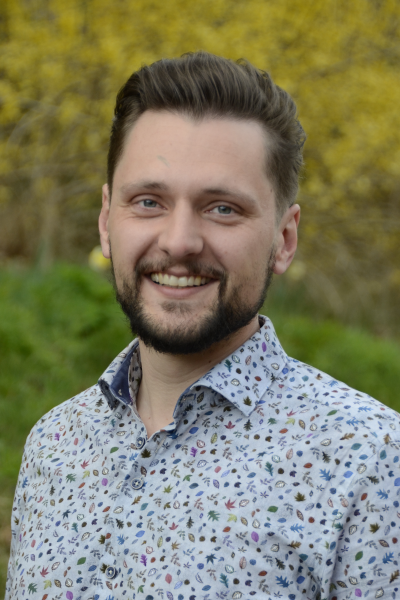Tobias Andermann
Biträdande universitetslektor vid Institutionen för organismbiologi; Systematisk biologi
- Telefon:
- 018-471 64 79
- Mobiltelefon:
- 070-167 93 16
- E-post:
- tobias.andermann@ebc.uu.se
- Besöksadress:
- Evolutionsbiologiskt centrum, Norbyv. 18D
75236 Uppsala - Postadress:
- Norbyv. 18D
75236 Uppsala
Mer information visas för dig som medarbetare om du loggar in.
Kort presentation
Denna text finns inte på svenska, därför visas den engelska versionen.
Biodiversity is disappearing at an alarming rate, as our human impact on this planet far exceeds sustainable levels. Through combining AI techniques with large-scale environmental DNA data sets and high-resolution remote sensing data, I aim to contribute to improving our understanding of how biodiversity is distributed and where it is most threatened. My vision is the development of standardized methods to measure and model biodiversity for any given site.
More information at biodiversity.se
Nyckelord
- biodiversity
- biodiversity assessments
- biodiversity indicators
- computational biology
- data-driven life science
- environmental dna
- machine learning
- metabarcoding
- remote sensing
Forskning
Denna text finns inte på svenska, därför visas den engelska versionen.
We are a young and dynamic research group with the mission of contributing through our research to alleviating the ongoing biodiversity crisis. We value innovative ideas, a collegial and non-hierarchical atmosphere, and high-quality and high-impact research. And above all we enjoy what we are doing!
We are working on the intersect of computational biology and biodiversity research, developing new computational methods and fieldwork/labwork workflows to quantify the complexity of biodiversity. Our vision is to one day be able to reliably capture the biodiversity value of a given site in a standardized and reproducible manner.
A very promising data source for capturing local biodiversity is environmental DNA. New sequencing technologies allow researchers today to detect smallest amounts of DNA in environmental samples, such as samples of the soil, leaf-litter, water, or air. These sequences can be mapped back to reference databases to determine which species, genus, family a given DNA fragment originated from. These data can then be used to reconstruct a genetic fingerprint of the species community at a given site, even including estimates of diversity in groups that can not be identified by eye (hidden diversity). Therefore, one line of our research, in close collaboration with several other labs, focuses on developing on-site-sampling protocols with specially adapted environmental DNA sampling kits, as well as fine-tuning the laboratory workflow necessary to amplify target markers across the whole tree of life from these samples.
Another line of our research focuses on the development of automated AI prediction systems. These systems can be trained on diversity estimates from the previously mentioned site-based approaches and learn to estimate biodiversity in different environments and taxonomic groups. For this purpose we apply high-resolution remote sensing data (e.g., satellite images and airborne laser scan data) among several other biotic and abiotic predictors. With this framework we aim to improve our understanding of how biodiversity is distributed, where it is most threatened, and where and under which conditions it flourishes.
Media
Lab webpage
See our lab webpage for more information.

